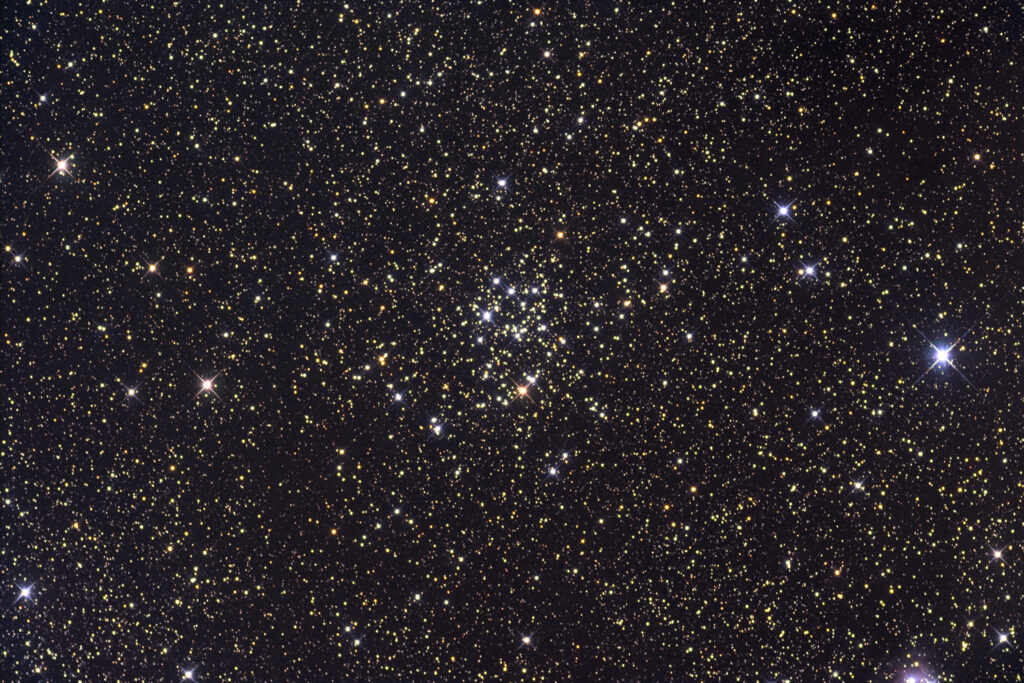Messier 50
Open Cluster, Monoceros
- Description
- Technical
- Links
Messier 50 or M 50, also known as NGC 2323, is an open cluster of stars in the constellation Monoceros. It was recorded by G. D. Cassini before 1711 and independently discovered by Charles Messier in 1772 while observing Biela’s Comet. It is sometimes described as a ‘heart-shaped’ figure or a blunt arrowhead.
M50 is about 2,900 light-years away from Earth and is near to but narrowly not estimated to be gravitationally tied to the Canis Major (CMa) OB1 association. It has a core radius of 5.9 ly (1.8 pc)[6] and spans 17.8 ly (5.46 pc). The cluster has 508 confirmed and 109 probable members – their combined mass is more than 285 M☉, the mean stellar density would thus be 1.3 stars per cubic parsec. It is around 140 million years old, with two high-mass white dwarfs and two chemically peculiar stars.
Telescope: ASA N16 f3.6
Mount: Astro Physics 1200GTO
Camera: SBIG STL-11000M
Guider: SBIG STL-Internal
L: 15×1 mins = 15 mins, R: 15×1 mins = 15 mins, G: 15×1 mins = 15 mins, B: 15×1 mins = 15 mins
Total Imaging Time: 1h 00m
Data Imaged remotely over 1 night during February 2009.
Data acquisition & Processing by David Churchill.
None

